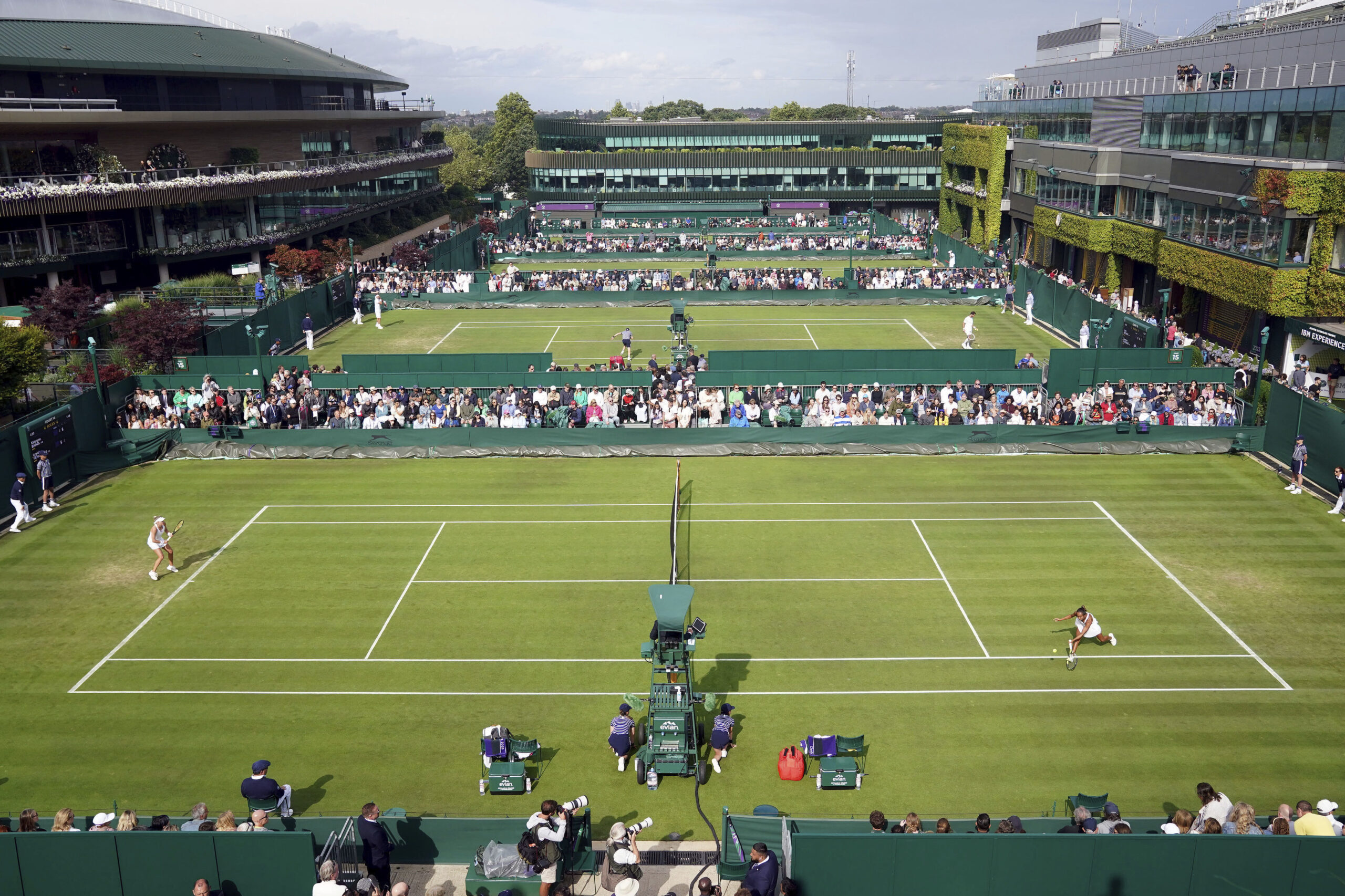You can watch Wimbledon on TV outdoors in Brooklyn. It’s part of a bid to blend the past and present

BROOKLYN BRIDGE PARK — Tennis fans in New York can gather to see live TV coverage of the last three days of Wimbledon at an outdoor watch party at Brooklyn Bridge Park from July 14-16, featuring the women’s final and the men’s semifinals and final. Online registration for 1,500 free tickets for each day ends Thursday; walk-ins will be allowed, too.
So much of that paragraph would have been incomprehensible to anyone around for the initial edition of the oldest Grand Slam tennis tournament in 1877, from the television broadcast to the trans-Atlantic appeal to the online element to, even, the participation of women in the competition: They were not allowed to play singles until 1884 or doubles until 1913.
The creation of “The Hill in New York” — touted as “a quintessential Wimbledon experience from afar,” replete with gin and tonics, strawberries and cream, fish and chips, tea and scones and, naturally, a merchandise shop with the same towels, hats and other official tournament paraphernalia sold at the actual competition site — is one of many ways in which the All England Club (full name: All England Lawn Tennis & Croquet Club) is setting one foot in the modern age, such as the retractable roofs on Centre Court and No. 1 Court that permitted play as rain fell Tuesday and Wednesday, while keeping another solidly rooted in its famous past.

Brooklyn Heights
View MoreRead the Brooklyn Height's Press and Cobble Hill News. Find out more about Brooklyn Height's History here.